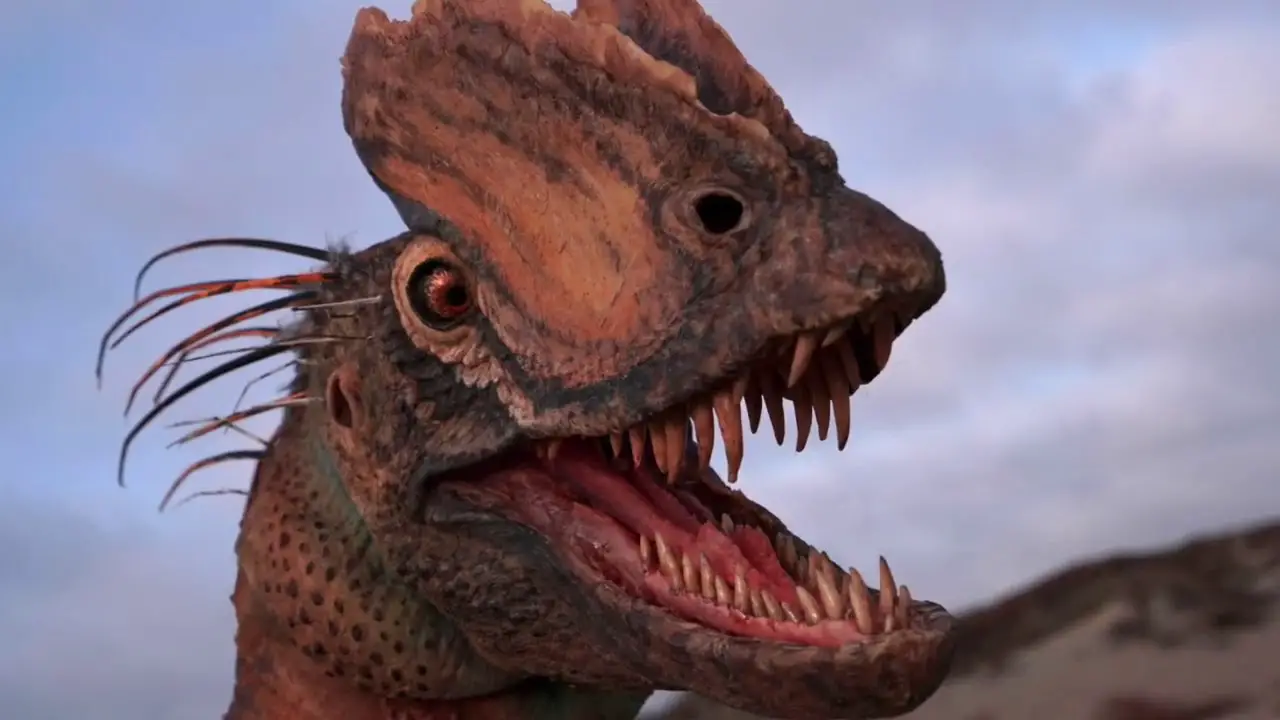Dilophosaurus Dinosaur Fun Facts
Table of Contents
The earliest large carnivorous dinosaur, Dilophosaurus lived during the Late Triassic and Early Jurassic Periods. Standing on two feet, Dilophosaurus had slender legs that were well-suited to running at high speeds and short but strong forelimbs with sharp claws. It could grow to about 20 feet long.
- Its name means “two-crested lizard” because it has a prominent crest on its head formed by two bony ridges.
- Because Dilophosaurus’ jaws seem weak, some scientists theorize that it was a scavenger rather than a predator.
- Scientists do not know the purpose of its crest, though some think that males with larger crests might have dominated other Dilophosauruses.
The animatronic Dilophosaurus at Brookfield Chicago Zoo measures 16.50′ long x 2.97′ wide x 7.26′ tall.
Features
The Diplodocus was a four-legged animal with sturdy legs, a long neck, and a whip-like tail. From the fossil remains found, it was concluded that it could have measured around 54 meters long and weighed about 113 tons. Such figures placed it for many years as the largest dinosaur that inhabited the Earth, for which it was kept safe from predators such as Allosaurus and Ceratosaurus.
As for its members, it has been said that the front ones were slightly shorter than the rear ones. On the other hand, the skull of this animal was small compared to the proportions of its body. In such a way, it was 37 meters long. Diplodocus teeth were small peg-shaped and found only on the front of the jaws, slightly angled forward.
The neck of these dinosaurs was kept parallel to the ground, having 15 vertebrae. For its part, the tail was made up of more than 80 caudal vertebrae. It is said that this was a way of counterbalancing the neck and had in the middle, double beams, which provided support for the rest of the vertebrae.
What Do Dilophosaurus Eat?
Due to the shape of the Diplodocus teeth – long, elliptical dental crowns in cross-section, with a blunt triangular point at the apex – it is thought that the removal of branches, using one side of the snout, was the way to feed.
The previous theory is based on the wear of the teeth found, which showed how one row of teeth was used to tear the leaves, while the other acted as a guide and stabilizer.
Due to the length of its neck, it is likely that Diplodocus could eat leaves that were found at low, medium, and high altitudes, up to 10 meters above the ground. The possibility that they could feed on aquatic plants, whether they were soft marine plants or algae, is not ruled out either. The latter is related to the opening of their nostrils.
To favor the digestive process, these dinosaurs used gastroliths, which is why it is considered that this system was similar to that of modern birds, that is, with crop and gizzard.
Dinosaur datasheet
- Diplodocus name
- Length 26 Meters.
- Height 4 Meters.
- Weight 15 tons
- Herbivore diet
- Upper Jurassic Period
- Years 155-145 million
- Found in USA
The genus Diplodocus groups diplodocid sauropod dinosaurs that inhabited North America, more than 140 million years ago, in the Kimmeridgian and Titonian periods.
These dinosaurs are also called double beam since their name is made up of words from the Neo-Latin diploos, which means double, and dokos translated as a beam, which when joined refers to the shape of their bones on the bottom from the tail. This name was granted by Othniel Charles Marsh in 1878.

The first specimens of Diplodocus were found in 1877 by SW Williston, in the upper part of the Morrison Formation, in the United States. And it is that in that area it constitutes an ideal space for large dinosaurs such as Camarasaurus, Barosaurus, Apatosaurus, Brachiosaurus, and Diplodocus.
Within the genus Diplodocus there are four known species: D. longus, D. Carnegie Hatcher, D. hallorum and D. hayi Holland. Of this genus, it is possible to find complete skeletons in museums.
